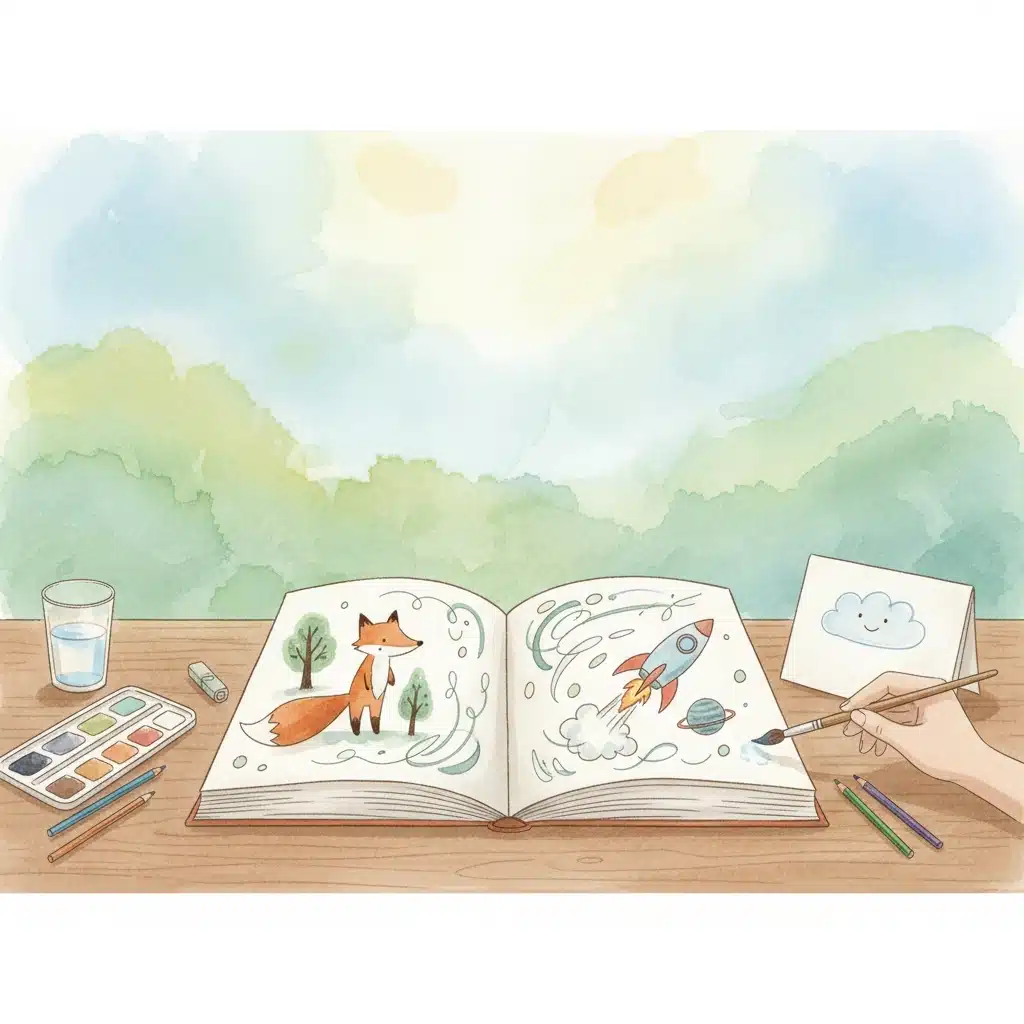Once you’ve written and edited your manuscript, and mapped out a rough layout, you’ll probably hit this question:
How am I going to get it illustrated?
If your first instinct is “I can’t afford that,” you’re not alone.
Illustration costs can vary wildly. Some quotes come in at $5,000 to $10,000+. And as much as I firmly believe artists and all creatives deserve to be paid well for their talent, expertise and hard work (myself included, hey creatives, we need to know our worth. But I digress), the reality is that many mission-driven professionals simply can’t afford it.
The good news? You have options.
Whether you’re creating SEL books for kids, developing resources for therapists to use with children, or crafting stories that support emotional learning, here’s how to start thinking creatively about the illustration process, without compromising your vision or blowing your budget.
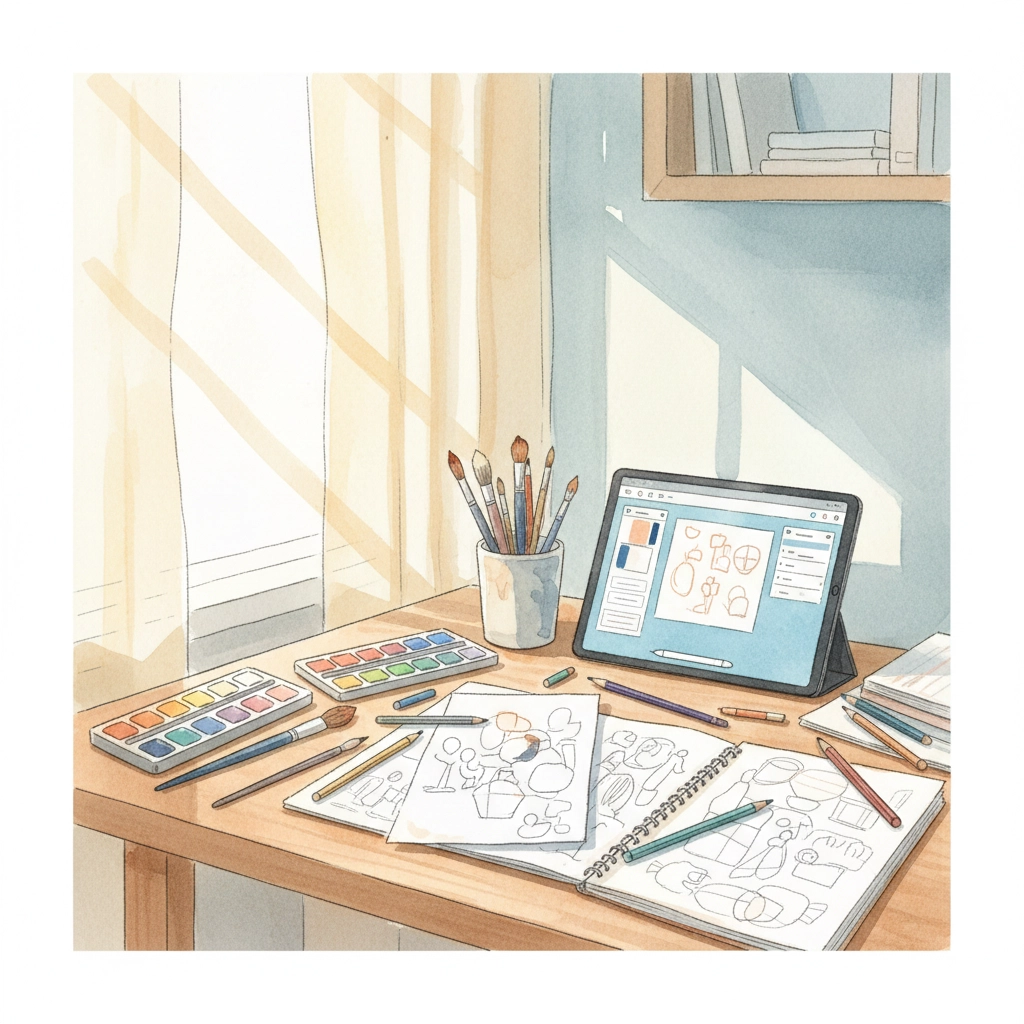
Start by defining your style
Look through picture books at the library. Screenshot art styles you love on Instagram. Make a Pinterest board.
This doesn’t have to be fancy, just start noticing what kinds of visuals you’re drawn to. That clarity will help you communicate with an illustrator later.
For mission-driven professionals creating children’s books about emotions or therapeutic content, pay special attention to how different artistic styles convey feelings. Notice how warm, soft illustrations might support mindfulness themes, while bold, expressive art could work beautifully for books addressing big feelings.
Sketch your ideas, even if they’re stick figures
Seriously. You don’t need to be an artist. Draw what’s in your head as simply as possible.
Where are the characters standing?
What action is happening on this page?
What’s the setting?
This gives you a sense of composition, helps with pacing, and reduces the risk of miscommunication later.
Consider these low- or no-cost illustration strategies:
1. Use AI or Canva mockups for early planning
You’re not publishing these, just using them to clarify ideas. It helps organize your layout and storyboard before hiring anyone.
2. Hire an emerging illustrator
Look for artists who are just starting out or growing their portfolio. They may be more flexible on pricing, especially if you offer creative freedom or flexible timelines.
Try: Instagram, Fiverr, Upwork, art school job boards, or Facebook illustration groups.
Pro tip for mission-driven creators: When reaching out to emerging illustrators, share your book’s purpose and impact. Many artists are drawn to meaningful projects and may be more willing to work within your budget when they understand the educational or therapeutic value of your work.
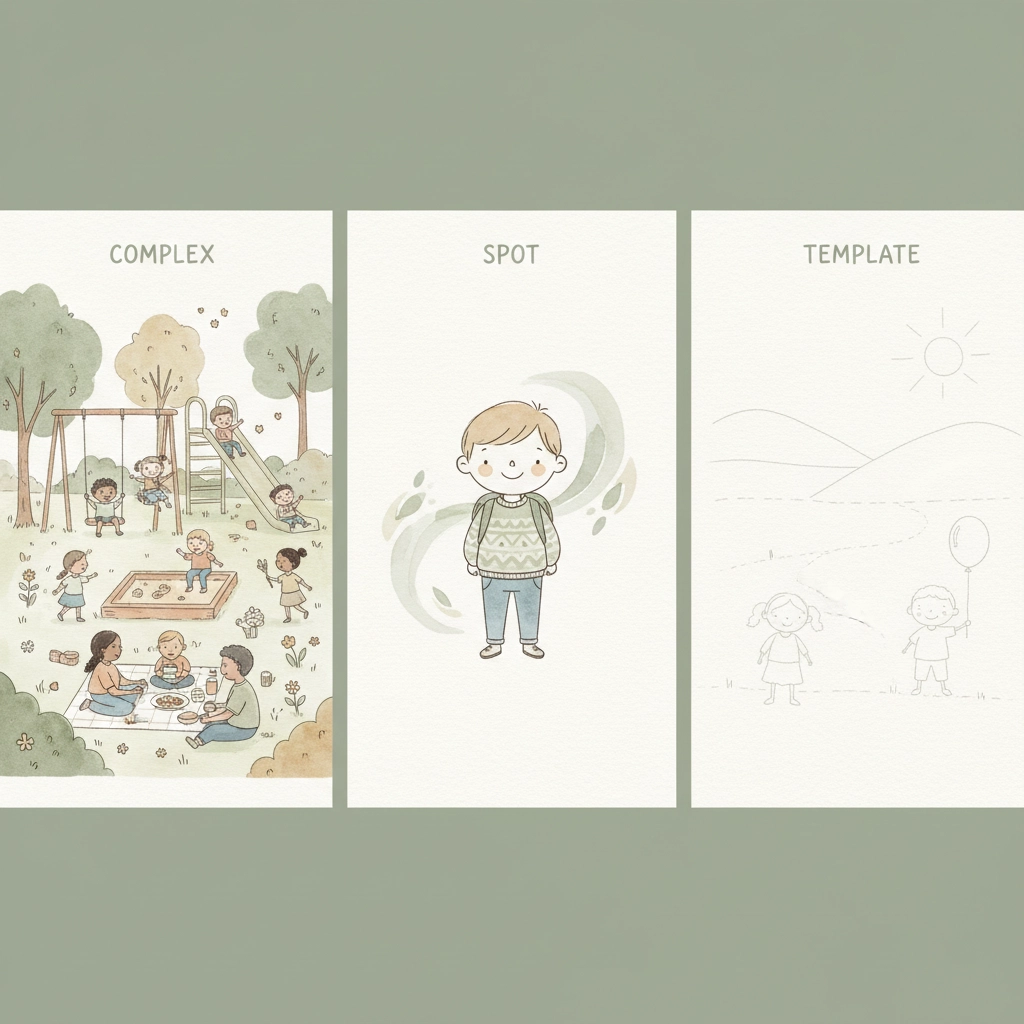
3. Mix illustration types
Not every page needs a full, detailed spread. Consider:
- A few full-page scenes (mid-range level of detail)
- A handful of spot illustrations (most affordable level of detail)
- Repeating background templates with character variations
This is another opportune time to visit your local library and look through the picture books. See what you like and get ideas. There are so many different ways to structure the art and convey your story.
This approach works especially well for books designed for therapeutic use, where consistency in character design helps children connect with the story while strategic full-page illustrations can emphasize key emotional moments or learning concepts.
4. Do it yourself (yes, really)
You don’t need to be Mo Willems. If your art has personality, charm, or heart: it can work.
Check out Todd Parr or Elise Gravel. Stick figures or bold doodles are totally valid styles when used intentionally.
And if you’re curious about digital art, apps like Procreate or Adobe Fresco are approachable, even for beginners. I’ve never tried the latter, but Procreate is incredible. I can’t recommend it enough.
A tablet or any touch screen will take you to the next level because you can draw directly on the screen with a stylus touchscreen pen (I got a no-name one on Amazon that works great).
I always recommend searching for free tutorials for everything on YouTube. It’s a goldmine out there.
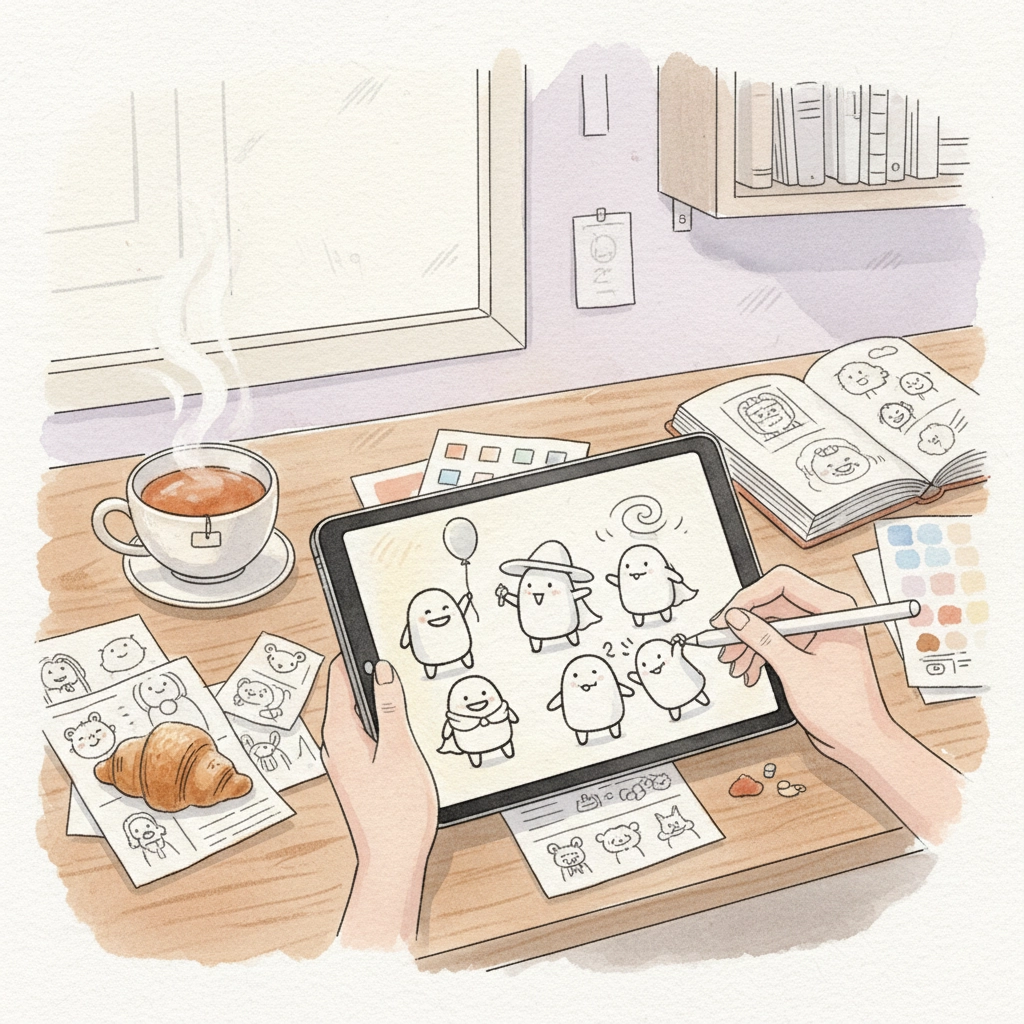
Bonus: Be transparent with your illustrator
Once you’re ready to hire, be honest about your budget, your timeline, and what you’re hoping to create. The right illustrator will work with you: or refer you to someone who can.
The key is being clear, realistic, and kind. It’s a collaboration, not a transaction.
Don’t be afraid to ask the tough questions: many people feel uncomfortable talking about money, but you need to push through the discomfort. It’s important:
- Do they offer different styles at different price-points, i.e. less detailed?
- What is their pricing structure? Is it project-based or do they tailor unique packages?
- What are their rates for spot illustrations, full-page illustrations and double-page spreads?
Ask if they can create a custom proposal outlining what’s possible within your budget.
Being honest and transparent from the get-go sets you up for a solid collaborative relationship. This ultimately leads to a better final creative product.
Making It Work for Your Mission
For educators, therapists, and other professionals creating children’s books about emotions or social-emotional learning, remember that authenticity often resonates more than technical perfection. Children respond to genuine emotion in art, whether it’s professionally polished or charmingly hand-drawn.
Consider how your book’s illustrations can support its educational goals:
- Simple, clear artwork works beautifully for books designed for therapeutic settings
- Diverse character representation ensures all children see themselves in your story
- Consistent visual cues can help reinforce learning concepts throughout the book
If you’re developing resources specifically for use by therapists or educators, think about practical considerations too. Will the illustrations reproduce well when photocopied? Do they support the activities or discussions you’re hoping to facilitate?
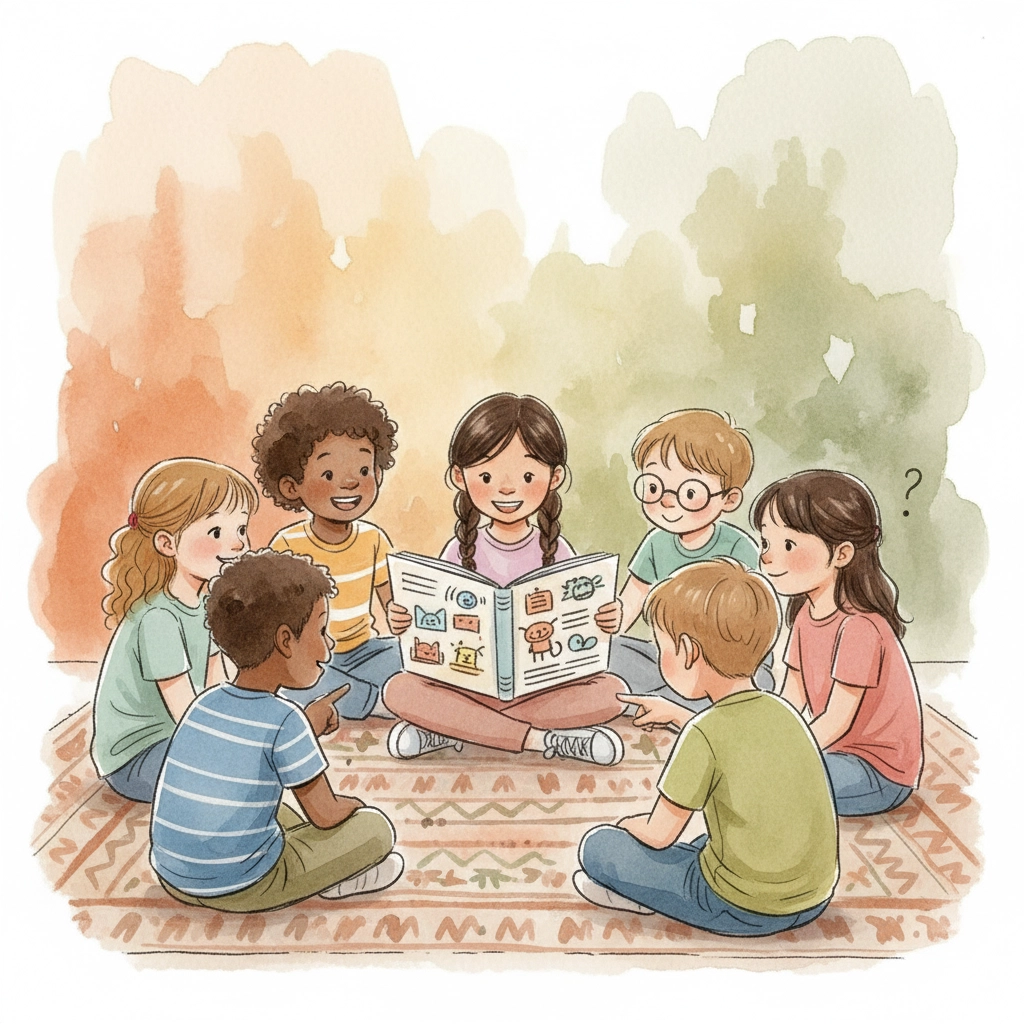
The Bottom Line
Illustration doesn’t have to be all or nothing. There’s a middle ground between doing everything yourself and paying thousands.
And remember: the heart of your book is the story. The art supports it: but it doesn’t need to outshine it.
Whether you’re creating your first children’s book about mindfulness, developing SEL resources for classroom use, or crafting a story to help children navigate difficult emotions, the most important element is the meaningful message you’re sharing. The right illustrations: whether created by you, a professional, or through a creative combination of approaches: will help that message reach the hearts and minds of the children who need it most.
Your mission matters. Your story deserves to be told. And with these budget-friendly strategies, there’s nothing standing between you and bringing your vision to life.
Ready to take the next step in your children’s book journey? Explore our publishing services designed specifically for mission-driven professionals, or get in touch to discuss how we can help bring your story to life.

